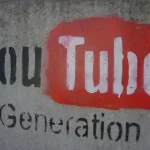It’s no secret that just as with Google, YouTube’s algorithms are a closely-guarded secret. Unfortunately, it also seems to be no secret that compared to Google, YouTube seems in many ways to be fumbling in the dark.
As noted by Ben Popken of NBC News, YouTube wants people to spend as much time watching videos as possible, but its algorithms aren’t entirely sure on how.
“Routine searches on YouTube can generate quality, personalized recommendations that lead to good information, exciting storytelling from independent voices, and authoritative news sources,” writes Popken.
“But they can also return recommendations for videos that assert, for example, that the Earth is flat, aliens are underneath Antarctica, and mass shooting survivors are crisis actors.”
YouTube is engaged in a constant tug-of-war between genuine content creators and bad actors looking to exploit the platform for monetary gain. And though it’s made its fair share of missteps, with decisions and announcements that left many creators scratching their heads, the algorithm’s core has remained fairly consistent. That, in turn, means anyone interested in search engine optimization (SEO) on YouTube has been able to determine, through careful observation, the things that really drive up your viewer (and subscriber) count.
We’re going to discuss the top three.
Video Keywords
As with more traditional written content, every good YouTube video begins with keyword research. With understanding what your audience is looking for, why they’re looking for it, and how they’re looking. The key is to use those keywords to generate topics that are not only in high demand and on which you are an authority.
You can start by using YouTube’s Search Suggest feature to help you figure out what people (or more specifically, your audience) are currently searching for on the platform. Check out the most popular videos, and see what keywords they’re optimized around. Pay close attention to what they do and how they do it; these are your primary competitors.
If you’re stuck on topics, you may also want to consider tapping resources like Answer the People or Quora.
Once you’ve compiled a list of keywords and topics, your next step is to determine which will generate the most traffic. For this, you can use a tool like the Ahrefs keyword explorer. From within the tool, perform a phrase match search with YouTube as the selected search engine.
You can do this as many times and for as many combinations of keywords as you like. The idea here, as explained by the AHRefs blog, is to filter for results that have at least 500 monthly searches, and for which most videos are relevant to your niche. It also notes that Google Trends can further inform your research.
One last point of order here. In addition to including your keyword in the text-based portions of your video, say the keyword at least once.
Thumbnails, Descriptions, and Titles
No matter what social network you’re on, first impressions are everything. And the first impression your users will have of your videos is what appears on the search engine results page. This includes your video’s description, thumbnail, title, and a few statistics (uploader, views, time uploaded, and length).
Making a compelling first impression is absolutely essential if you want people to click-through and actually watch your videos. Doing so involves three things. First, you need a high-quality thumbnail:
- Use an image that’s 1280×720 pixels. If you must use one that’s larger, stick to an aspect ratio of 16:9. We don’t recommend using one that’s smaller.
- Make sure the image is on-brand for you. What this means varies, but you might consider using high-quality stock photos or creating some quality lifestyle imagery on your own.
- Make sure the image provides an accurate reflection of your video’s content. Certain YouTubers, such as Ricegum, use misleading thumbnails as a tactic. While this can lead to a short-term increase in traffic and engagement, it will ultimately alienate a large percentage of your audience.
- Include text. Generally, this should be in some way related to your video’s title (which we’ll discuss in a moment). You may also consider providing additional context to what your video contains or including a logo/slogan.
- Use the right font. Generally, this is anything that fits with your brand’s level of professionalism while also being easy to read. That said, there are certain fonts you should avoid, notes logo design expert Logo Maker. These include comic sans, papyrus, and perhaps surprisingly, times new roman.
Next, you need a compelling title. Your title should be concise, coming it at under 60 characters. It should be fully viewable on all suggested results pages, avoid inappropriate language, and use proper punctuation. Finally, it should be attention-grabbing without being spammy or deceptive.
Let’s say the topic you’re targeting involves ranking on YouTube.
A good title would be along the lines of “5 Tips For Ranking On YouTube” or “Five Tips To Help You Improve Your YouTube Ranking.” A bad title, meanwhile, would be “MASTER YOUR YOUTUBE RANKING WITH THESE FIVE SECRETS!” or “Five Tips Guaranteed To Make Your YouTube Videos Rank High.”
Last but certainly not least, your video description. Like your title, your description should include the primary words you’re targeting with your video. The first few lines of text, which will be visible to searchers, should describe exactly what your video is about.
As for the rest of your description, you can include links to your various social feeds and websites, information about your business and brand, or timestamps that serve as a sort of ‘table of contents’ for longer videos. Avoid stuffing this section with keywords. Rather, you should treat it more as a business profile than anything.
For more information on writing compelling descriptions and titles and creating good thumbnails, you can check out the YouTube Creators Academy.
Audience Engagement
We’ve saved the most complicated component of YouTube SEO for last. Audience engagement is somewhat tricky, mostly because of how much goes into it. This includes:
- Click-through rate. How many people access your video from the search page.
- Shares. How frequently the video is shared on social media.
- Likes/Dislikes. Believe it or not, YouTube doesn’t differentiate between likes and dislikes when measuring engagement. They’re treated equally. That said, a high dislike ratio can influence your audience or indicate that your video doesn’t provide value, so you’ll want to aim for likes regardless.
- User comments. Self-explanatory.
To boost audience engagement, your best bet is to just make excellent content that people can’t help but share. You’ll also want to consider asking people to comment, like, or subscribe at the end of each video. In-video links are also huge, and YouTube notices when people click from one of your videos to another.
Watch Your SEO
YouTube can be a powerful way to establish or grow a brand if you know how to use it. And SEO on YouTube isn’t all that different from SEO on the web. It’s a slightly different platform, sure, but the fundamentals ultimately remain the same.
By understanding that, you’re one step closer to creating videos that excite, delight, and engage.




